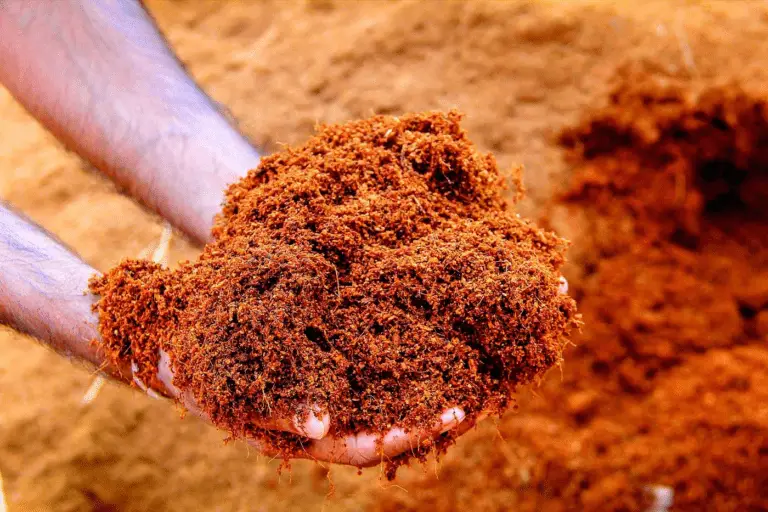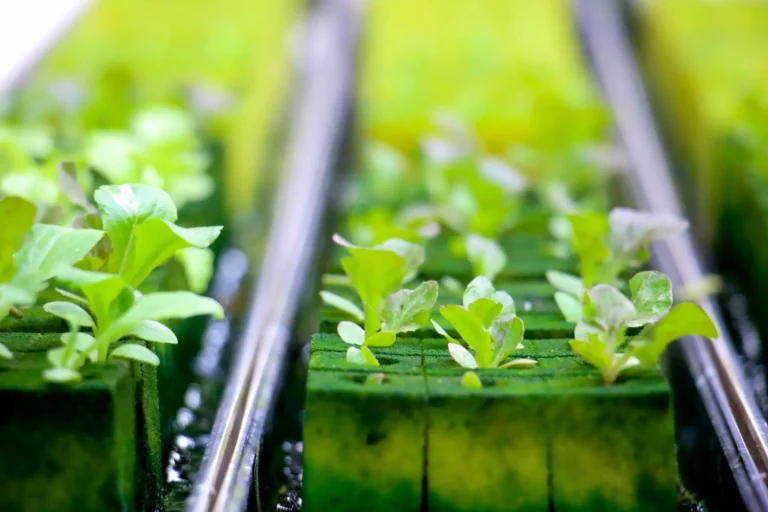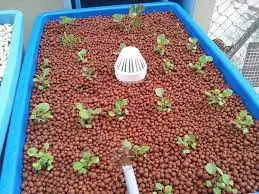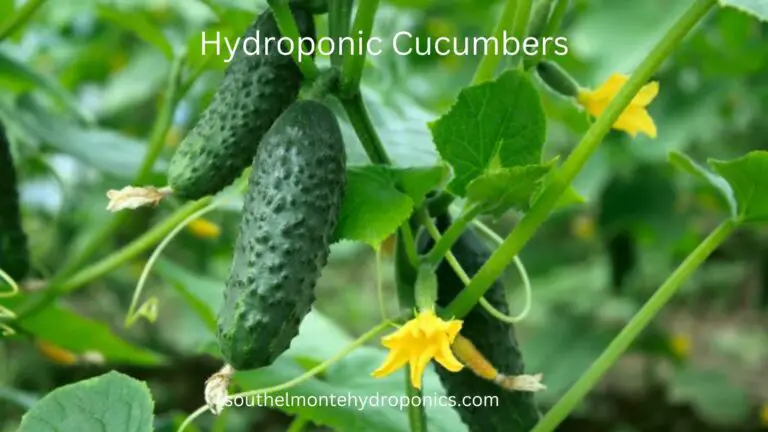Rice Hulls as a Medium: Starting Your Own Hydroponic Garden
Rice Hulls as a Medium: Starting Your Own Hydroponic Garden
Rice hulls are increasingly being recognized as an excellent medium for hydroponic gardening due to their numerous advantages. As a beginner looking to start your own hydroponic garden, using rice hulls as a growing medium can provide you with a solid foundation for success.
One of the key benefits of using rice hulls is their excellent drainage capabilities. Unlike other growing media such as perlite or vermiculite, rice hulls do not compact over time, allowing for consistent airflow and preventing waterlogging issues that can harm plant roots. This superior drainage also helps in maintaining proper oxygen levels, ensuring that your plants receive the necessary oxygen for healthy growth.

Moreover, rice hulls are lightweight and easy to handle, making them ideal for setting up and maintaining a hydroponic system. Whether you choose a Deep Water Culture (DWC) system or a Nutrient Film Technique (NFT) system, rice hulls provide stability for your plants while allowing the nutrient-rich solution to flow freely around the root zone.
• Rice hulls have excellent drainage capabilities, preventing waterlogging and promoting healthy root growth.
• They do not compact over time, ensuring consistent airflow to the roots.
• The superior drainage helps maintain proper oxygen levels for plant health.
• Rice hulls are lightweight and easy to handle, making them ideal for hydroponic systems.
• They provide stability for plants while allowing the nutrient solution to flow freely around the roots.
Understanding Hydroponics: Exploring the Basics of Soilless Gardening
Hydroponics is a modern gardening method that is gaining popularity among gardening enthusiasts. Unlike traditional gardening, hydroponics does not rely on soil as a growing medium. Instead, plants are grown in nutrient-rich water solutions that provide all the essential elements needed for their growth. This soilless gardening technique offers several advantages, including efficient use of resources and space, increased crop yields, and the ability to grow plants in any location, regardless of soil conditions.
One of the key principles behind hydroponics is the concept of nutrient film technique (NFT), which involves constantly circulating a thin film of nutrient-rich water over the plant roots. This allows the plants to have direct access to the necessary nutrients while eliminating the need for soil. Another popular hydroponic method is the deep water culture (DWC) system, where plant roots are submerged in a nutrient solution that is continuously oxygenated. This method promotes rapid plant growth and is often used for growing leafy greens and herbs.

In addition to the elimination of soil, hydroponics also offers better control over plant nutrition and environmental conditions. By adjusting the nutrient solution and pH levels, gardeners can provide plants with optimal growing conditions, leading to healthier and more productive crops. Furthermore, hydroponics minimizes the risks associated with pests, diseases, and weeds, as the absence of soil makes it difficult for these organisms to thrive. This makes hydroponics a sustainable and efficient gardening method that can contribute to food production in both urban and rural settings.
• Hydroponics is a soilless gardening method that relies on nutrient-rich water solutions instead of soil.
• This technique offers advantages such as efficient resource and space utilization, increased crop yields, and the ability to grow plants in any location.
• The nutrient film technique (NFT) involves circulating a thin film of nutrient-rich water over plant roots, providing direct access to necessary nutrients without soil.
• The deep water culture (DWC) system submerges plant roots in oxygenated nutrient solution for rapid growth, commonly used for leafy greens and herbs.
• Hydroponics allows better control over plant nutrition and environmental conditions by adjusting the nutrient solution and pH levels.
• This method minimizes risks associated with pests, diseases, and weeds due to the absence of soil.
• Hydroponics is a sustainable and efficient gardening method suitable for both urban and rural settings.
The Benefits of Hydroponics: Why Choose this Method for Your Garden
Hydroponics is becoming an increasingly popular method for gardening enthusiasts, and for good reason. This soilless gardening technique offers a multitude of benefits that make it an attractive choice for those looking to maximize their garden yields.
One major advantage of hydroponics is its ability to optimize water usage. Unlike traditional soil-based gardening, hydroponics allows for precise control over water delivery to plants, resulting in reduced water waste. Studies have shown that hydroponic systems can use up to 90% less water than conventional soil gardening methods, making it an environmentally friendly option in regions facing water scarcity. Additionally, the controlled environment of hydroponics prevents excess water runoff, which can help minimize the risk of soil erosion and pollution of water sources.
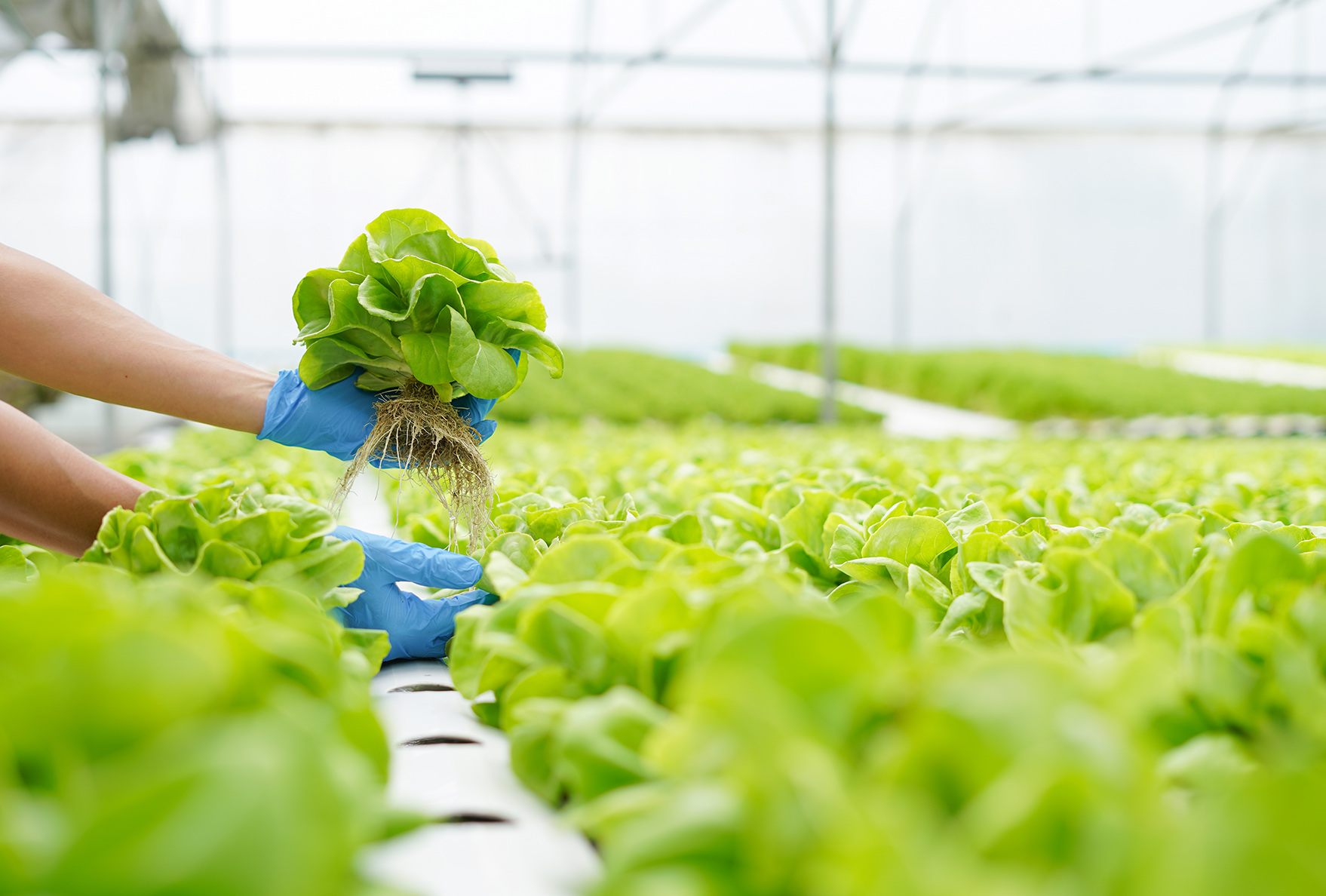
Another significant benefit of hydroponics is the accelerated growth and higher yields it offers. By supplying plants with the exact nutrients they need, growers can optimize their growth potential and harvests. In traditional gardening, plants must extract nutrients from the soil, which may vary in quality and composition.
In hydroponics, however, the nutrients are directly delivered to the plants’ roots, resulting in faster growth and higher crop yields. This precision nutrient delivery also minimizes the risk of nutrient deficiencies or imbalances, ensuring healthy and robust plants throughout the growing season.
• Hydroponics allows for precise control over water delivery, reducing water waste
• Studies have shown that hydroponic systems can use up to 90% less water than conventional soil gardening methods
• Hydroponics prevents excess water runoff, minimizing the risk of soil erosion and pollution of water sources
• Accelerated growth and higher yields are achieved through supplying plants with exact nutrients they need
• Nutrients are directly delivered to the plants’ roots in hydroponics, resulting in faster growth and higher crop yields
• Precision nutrient delivery minimizes the risk of nutrient deficiencies or imbalances
Exploring Different Hydroponic Systems: Finding the Right Fit for You
When it comes to hydroponics, there are various systems to choose from, each with its own advantages and considerations. Finding the right system for your hydroponic garden will depend on factors such as space availability, desired crop types, and personal preferences. Let’s explore some of the different hydroponic systems available to help you make an informed decision.

One popular hydroponic system is the nutrient film technique (NFT). In this system, a thin film of nutrient-rich water continuously flows over the roots of the plants, providing them with the necessary nutrients. NFT systems are known for their efficient use of water and nutrient solutions, making them a great option for those looking to conserve resources.
However, it’s important to note that NFT systems require a constant flow of electricity to keep the water flowing, so access to electricity is crucial. Additionally, NFT systems may not be suitable for all plant types as certain plants, such as those with heavy root systems, may not fare well in this system. Overall, if you’re looking for a system that maximizes water and nutrient efficiency, the NFT system may be the right fit for you.
• Nutrient film technique (NFT) is a popular hydroponic system
• NFT systems continuously flow nutrient-rich water over plant roots
• NFT systems are efficient in water and nutrient use
• Requires access to electricity for constant water flow
• Not suitable for all plant types, especially those with heavy root systems
Getting Started with Hydroponics: Essential Tools and Equipment
Hydroponics is an innovative gardening method that allows you to cultivate plants without soil. Instead, plants are grown in a nutrient-rich solution, providing them with everything they need to thrive. If you’re new to hydroponics and looking to get started, there are a few essential tools and equipment that you’ll need to ensure success.
First and foremost, you’ll need a hydroponic system. There are several types to choose from, including drip systems, nutrient film technique (NFT) systems, and deep water culture (DWC) systems. Each system has its own advantages and considerations, so it’s important to research and select the one that best fits your needs and space constraints.
You’ll also need a reliable pH meter and a TDS (total dissolved solids) meter to monitor the pH and nutrient levels in your hydroponic solution. Maintaining the proper pH balance is crucial for optimal plant growth, and these meters will help you achieve and maintain the ideal levels. In addition, you’ll need a water pump to circulate the nutrient solution, as well as air stones or diffusers to ensure proper oxygenation of the roots.
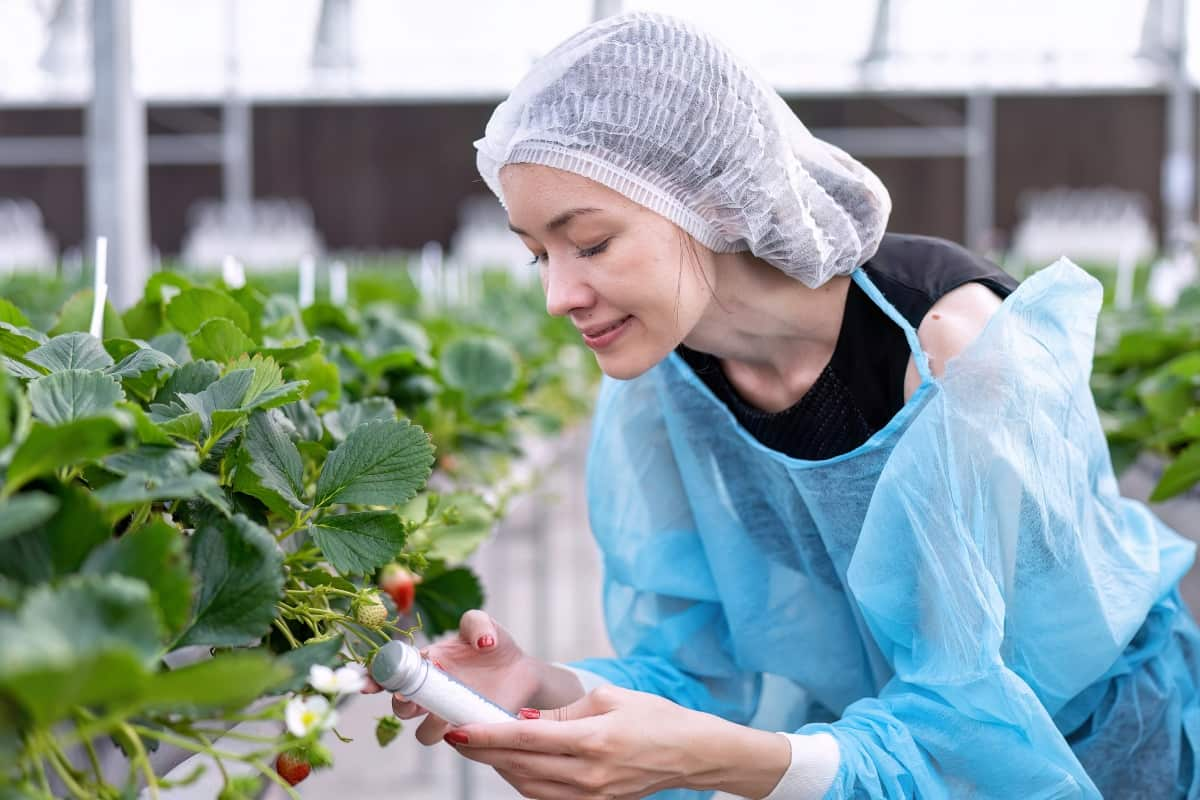
Other essential tools include grow lights, which provide the necessary light spectrum for plant growth in the absence of natural sunlight. LED lights are a popular choice for hydroponics due to their energy efficiency and long lifespan. Additionally, you’ll need growing trays or containers, growing media such as rockwool cubes or perlite, and a timer to control the lighting schedule.
By investing in these essential tools and equipment, you’ll be well on your way to starting your own hydroponic garden. Remember to thoroughly research and select the right system for your needs, and familiarize yourself with proper maintenance and care techniques to ensure successful plant growth. So, get ready to embark on an exciting journey into the world of hydroponics and experience the joys of soilless gardening firsthand!
• Hydroponic system: Choose from drip systems, NFT systems, or DWC systems based on your needs and space constraints.
• pH meter and TDS meter: Monitor pH balance and nutrient levels in the hydroponic solution for optimal plant growth.
• Water pump: Circulate the nutrient solution to provide plants with essential nutrients.
• Air stones or diffusers: Ensure proper oxygenation of the roots.
• Grow lights: LED lights are energy-efficient and provide the necessary light spectrum for plant growth.
• Growing trays or containers: Provide a suitable environment for plants to grow in hydroponics.
• Growing media such as rockwool cubes or perlite: Support plant roots and help maintain moisture levels.
• Timer: Control the lighting schedule to mimic natural sunlight patterns.
Selecting the Ideal Growing Medium for Your Hydroponic Garden
When it comes to selecting the ideal growing medium for your hydroponic garden, there are several factors to consider. The growing medium plays a crucial role in providing stability and support to the plants, as well as facilitating the delivery of nutrients and water. Additionally, it affects the overall health and growth of the plants.
One important aspect to consider is the water-holding capacity of the growing medium. It should be able to retain moisture while allowing excess water to drain properly. This is essential for maintaining the optimal moisture level for plant growth and preventing issues such as waterlogging and root rot.
Another factor to consider is the pH stability of the growing medium. It should have a pH level that is within the suitable range for the specific plants you are cultivating. This ensures that the plants can effectively absorb nutrients from the solution and maintain a healthy growth.
• The growing medium should have a pH level that is within the suitable range for the specific plants being cultivated
• pH stability of the growing medium ensures effective nutrient absorption and healthy growth of plants
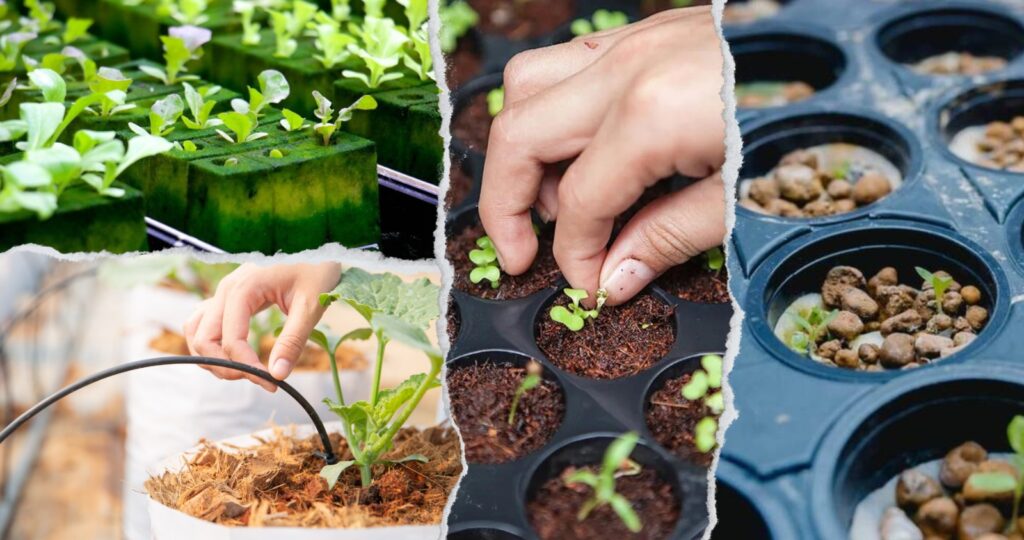
In addition, it is important to consider the texture and structure of the growing medium. It should provide adequate support for plant roots while allowing them to easily penetrate and spread throughout. A well-structured growing medium promotes strong root development, which in turn leads to healthier and more productive plants.
• Texture and structure of the growing medium should provide support for plant roots
• Well-structured growing medium promotes strong root development
Furthermore, it is crucial to choose a sterile or disease-free growing medium. This helps prevent the introduction or spread of pathogens that can harm your plants. Sterile media also reduces competition from weeds or other unwanted organisms, ensuring that your hydroponic garden remains clean and healthy.
• Choose a sterile or disease-free growing medium to prevent pathogen introduction/spread
• Sterile media reduces competition from weeds/unwanted organisms
Lastly, consider factors such as availability, cost-effectiveness, sustainability, and ease of use when selecting a growing medium for your hydroponic garden. Different types of mediums are available on the market including perlite, vermiculite, coconut coir, rockwool cubes among others. Each has its own advantages and disadvantages depending on various factors such as crop type and system setup.
• Consider availability, cost-effectiveness,sustainability,and ease-of-use when choosing a growinngmedium
•Different typesofgrowingmediaavailableincludingperlite,
vermiculite,cococonutcoirandrockwoolcubes.
Eachhasitsownadvantagesanddisadvantagesdependingonvariousfactors
Rice Hulls as a Growing Medium: Exploring Its Advantages and Uses
Rice hulls are increasingly gaining popularity as a growing medium in hydroponic gardening due to their numerous advantages and versatile uses. One of the main advantages of using rice hulls as a growing medium is their excellent drainage properties. These hulls have a high porosity, allowing water to flow through easily and preventing waterlogging, which can be detrimental to plant health. This feature ensures that the roots have access to ample amounts of oxygen, promoting healthy growth and preventing root rot.
In addition to their drainage capabilities, rice hulls also contribute to maintaining a stable pH balance in the hydroponic system. They are chemically inert, meaning they do not have any significant impact on the pH level of the nutrient solution. This is particularly beneficial for growers who need precise control over the pH of their hydroponic setup. Furthermore, rice hulls act as a buffer, helping to mitigate fluctuations in pH levels and ensuring a stable growing environment for the plants.

Due to the abundant availability of rice hulls in many agricultural regions, they are an affordable and cost-effective option for hydroponic growers. The utilization of this agricultural byproduct as a growing medium helps to minimize waste and supports sustainable farming practices. Moreover, rice hulls can be mixed with other types of growing media such as perlite or coconut coir to create a well-balanced blend that caters to the specific needs of different plant varieties. By experimenting with various ratios, growers can customize the growing medium to suit the requirements of their crops, enhancing overall productivity and yield.
As hydroponic gardening continues to evolve and expand, the benefits and versatility of rice hulls as a growing medium become increasingly evident. With their excellent drainage properties, pH stability, and cost-effectiveness, rice hulls offer a reliable and sustainable option for gardeners wanting to harness the power of hydroponics. By incorporating rice hulls into their hydroponic setups, growers can provide optimal growing conditions for their plants while reducing waste and maintaining environmental stewardship.
– Rice hulls have excellent drainage properties, allowing water to flow through easily and preventing waterlogging
– Their high porosity ensures ample oxygen for root health and prevents root rot
– Rice hulls are chemically inert, maintaining a stable pH balance in the hydroponic system
– They act as a buffer, mitigating fluctuations in pH levels and providing a stable growing environment for plants
– Rice hulls are affordable and cost-effective due to their abundant availability in agricultural regions
– Utilizing rice hulls as a growing medium helps minimize waste and supports sustainable farming practices
– They can be mixed with other growing media to create customized blends for different plant varieties
– By incorporating rice hulls into hydroponic setups, growers can provide optimal conditions while reducing waste
Understanding the Properties of Rice Hulls: What Makes Them Ideal
Rice hulls are an increasingly popular choice for hydroponic gardening due to their unique properties that make them ideal for this soilless growing method. One of the main advantages of rice hulls is their excellent drainage capabilities. The hulls have a coarse texture and large particle size, allowing water to flow freely through the growing medium. This prevents waterlogging and ensures that the plant roots have access to oxygen, which is crucial for their growth and overall health.
Furthermore, rice hulls are lightweight, which makes them easy to handle and transport. This is especially beneficial for larger hydroponic systems where the volume of growing medium required can be substantial. Additionally, their light weight helps to reduce the overall weight load on the hydroponic system, which can be advantageous for vertical gardening setups or when constructing portable systems. The use of rice hulls as a growing medium also contributes to the sustainability aspect of hydroponics, as they are a byproduct of rice production and can be sourced locally in many regions.

In summary, the properties of rice hulls, such as their excellent drainage capabilities and lightweight nature, make them an ideal choice for hydroponic gardening. Their ability to provide proper oxygenation to plant roots and their sustainability factor further enhance their appeal as a growing medium. By incorporating rice hulls into your hydroponic system, you can create an optimal environment for your plants to thrive and achieve success in your soilless gardening endeavors.
• Rice hulls have excellent drainage capabilities due to their coarse texture and large particle size, allowing water to flow freely through the growing medium.
• The ability of rice hulls to prevent waterlogging ensures that plant roots have access to oxygen, which is crucial for their growth and overall health.
• Rice hulls are lightweight, making them easy to handle and transport, especially beneficial for larger hydroponic systems.
• Using rice hulls as a growing medium helps reduce the overall weight load on the hydroponic system, advantageous for vertical gardening setups or portable systems.
• Rice hulls contribute to the sustainability aspect of hydroponics as they are a byproduct of rice production and can be sourced locally in many regions.
Preparing Rice Hulls for Hydroponic Use: Cleaning and Sterilizing Techniques
To ensure the success of your hydroponic garden, it is crucial to properly prepare rice hulls before using them as a growing medium. Cleaning and sterilizing techniques are essential in minimizing the risk of pests, diseases, and unwanted contaminants that could hinder the growth of your plants.
The first step in preparing rice hulls for hydroponic use is to thoroughly clean them. Begin by removing any debris or foreign particles, such as sticks or stones, by sifting the hulls through a fine-mesh screen. This will help to ensure that only clean hulls are used in your hydroponic system.
Next, it is important to sterilize the rice hulls to eliminate any potential pathogens. One common method is to steam the hulls for approximately 30 minutes. This process not only kills harmful organisms but also helps to break down any remaining lignin or organic matter. Another option is to soak the rice hulls in a dilute bleach solution, ensuring that the hulls are completely submerged for at least 15 minutes. This method effectively disinfects the hulls, making them safe for use in a hydroponic setup.
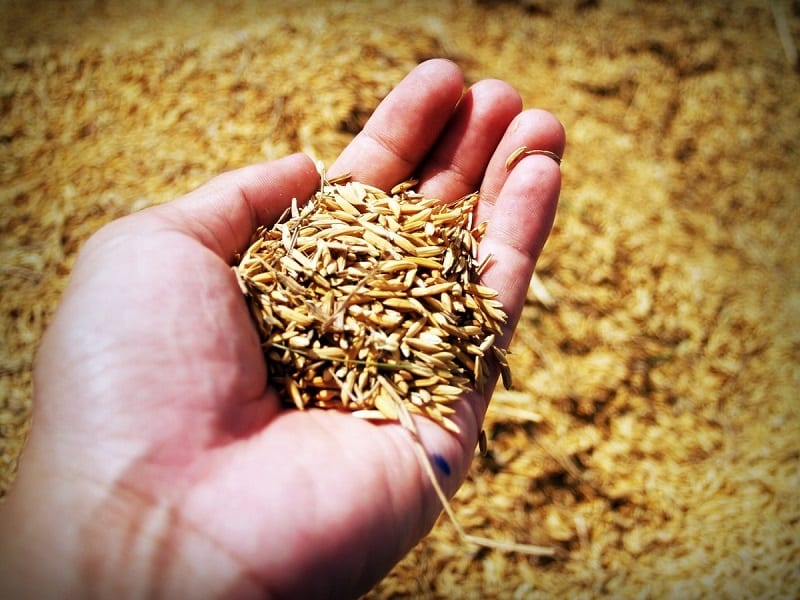
By taking the time to clean and sterilize your rice hulls, you are setting a strong foundation for a healthy and thriving hydroponic garden. Incorporating these preparation techniques will not only help to prevent the introduction of harmful contaminants but also promote optimal plant growth and overall success in your hydroponic endeavors.
• Thoroughly clean the rice hulls by sifting them through a fine-mesh screen to remove any debris or foreign particles.
• Steam the rice hulls for approximately 30 minutes to sterilize them and break down any remaining lignin or organic matter.
• Alternatively, soak the rice hulls in a dilute bleach solution, ensuring they are completely submerged for at least 15 minutes to effectively disinfect them.
• Cleaning and sterilizing the rice hulls minimizes the risk of pests, diseases, and unwanted contaminants that could hinder plant growth in your hydroponic system.
• These preparation techniques set a strong foundation for a healthy and thriving hydroponic garden.
Mixing Rice Hulls with Other Growing Media: Creating the Perfect Blend
When it comes to creating the perfect blend for your hydroponic garden, mixing rice hulls with other growing media can offer numerous benefits. Rice hulls are lightweight, porous, and have a high water-holding capacity, making them an excellent addition to various growing mediums.
One popular combination is to mix rice hulls with coconut coir. Coconut coir provides a good structure for the roots to grow, while the rice hulls aid in retaining moisture and improving aeration. This blend offers a balanced water-to-air ratio, ensuring optimal root development and nutrient uptake for your plants. Additionally, the coconut coir helps in maintaining the pH balance of the medium, while the rice hulls contribute to proper drainage, preventing waterlogging issues.
Another effective mix involves combining rice hulls with perlite. Perlite is a lightweight volcanic rock that adds excellent drainage to the growing medium. By incorporating rice hulls into this mixture, you enhance moisture retention and provide a more stable environment for your plants. This blend is particularly suitable for plants that require good aeration and root development, such as lettuce or herbs.
• Mixing rice hulls with coconut coir creates a balanced water-to-air ratio for optimal root development and nutrient uptake.
• Coconut coir provides structure for roots to grow, while rice hulls retain moisture and improve aeration.
• The combination helps maintain pH balance and prevents waterlogging issues.
• Rice hulls can also be mixed with perlite for excellent drainage in the growing medium.
• Perlite is a lightweight volcanic rock that enhances moisture retention when combined with rice hulls.
• This blend is ideal for plants that require good aeration and root development, like lettuce or herbs.
Ensuring Proper Drainage with Rice Hulls: Preventing Waterlogging Issues
Proper drainage is essential for any hydroponic system, and rice hulls can help prevent waterlogging issues that can negatively impact plant health and growth. Rice hulls have excellent drainage properties, thanks to their porous structure and ability to retain air pockets within the growing medium. When used as a component in hydroponic systems, rice hulls create a more balanced and oxygen-rich environment for the plants’ roots.
Waterlogging occurs when excess water is unable to drain effectively from the growing medium, leading to a lack of oxygen for the roots. This can result in root rot, nutrient deficiencies, and stunted growth. By incorporating rice hulls into your hydroponic setup, you can enhance drainage and prevent waterlogging. The rice hulls act as a buffer, allowing water to flow through the growing medium, while also holding enough moisture to provide sufficient hydration to the plants. This balance ensures that the roots receive the oxygen they need while avoiding excessive water retention.
• Rice hulls have a porous structure that allows for effective drainage in hydroponic systems.
• The air pockets within rice hulls help to create an oxygen-rich environment for plant roots.
• Waterlogging can lead to root rot, nutrient deficiencies, and stunted growth in plants.
• Incorporating rice hulls into a hydroponic setup helps enhance drainage and prevent waterlogging issues.
• Rice hulls act as a buffer, allowing water to flow through the growing medium while retaining enough moisture for proper hydration of plants.
Nutrient Absorption in Rice Hulls: How to Provide Essential Elements to Your Plants
Rice hulls are a unique and effective growing medium in hydroponic systems. One of their notable advantages is their ability to absorb and retain essential nutrients, providing plants with the elements they need for healthy growth. Nutrient absorption in rice hulls is an important aspect to consider when using them as a medium in your hydroponic garden.
Rice hulls have a high cation exchange capacity (CEC), which refers to their ability to attract and hold onto positively charged ions. This makes them efficient at absorbing and releasing essential elements such as nitrogen, phosphorus, and potassium, along with other micronutrients like calcium, magnesium, and iron. Their porous structure allows nutrients to be stored in the hulls, making them available to plants as needed, while preventing excessive leaching or runoff.
To ensure proper and efficient nutrient absorption in rice hulls, it is crucial to provide a well-balanced nutrient solution. Hydroponic fertilizers specifically formulated for soilless cultivation are readily available in the market and can be used to provide the necessary nutrients in the appropriate concentrations.
Regular monitoring of nutrient levels and pH balance is also essential to maintain optimal conditions for nutrient absorption. Additionally, adjusting the nutrient solution according to the specific requirements of different plant species will help maximize their growth and yield potential.
In conclusion, the nutrient absorption capacity of rice hulls makes them a valuable choice for hydroponic gardens. By understanding how nutrients are absorbed and utilized by plants in this growing medium, gardeners can ensure that their plants receive the essential elements they need for healthy growth and development.
• Rice hulls have a high cation exchange capacity (CEC), allowing them to attract and retain essential nutrients.
• Nutrients such as nitrogen, phosphorus, potassium, calcium, magnesium, and iron can be absorbed and stored in rice hulls.
• The porous structure of rice hulls prevents excessive leaching or runoff of nutrients.
• Using a well-balanced nutrient solution specifically formulated for hydroponic cultivation is crucial for efficient nutrient absorption in rice hulls.
• Regular monitoring of nutrient levels and pH balance is necessary to maintain optimal conditions for absorption.
• Adjusting the nutrient solution based on plant species requirements can maximize growth and yield potential.
Maintaining pH Balance in Your Hydroponic Garden with Rice Hulls
Maintaining the optimal pH balance is crucial for the success of your hydroponic garden using rice hulls as a growing medium. The pH level refers to the acidity or alkalinity of a solution, and it directly impacts nutrient availability and plant health. For most hydroponic crops, a pH range between 5.5 and 6.5 is recommended. Rice hulls have a slightly acidic nature, which can be advantageous for certain plants that prefer a lower pH. However, it is essential to actively monitor and adjust the pH to ensure a stable and suitable environment for your plants.
To maintain pH balance, regular testing is necessary. You can use pH testing kits or digital pH meters to accurately measure the pH level of your nutrient solution. If the pH is too high (alkaline), you can lower it by adding acidic substances such as phosphoric acid or citric acid to the nutrient solution. On the other hand, if the pH is too low (acidic), you can raise it by adding alkaline substances like potassium hydroxide or calcium hydroxide.
It is important to note that pH levels can fluctuate due to various factors, including nutrient uptake, evaporation, and other environmental conditions. Therefore, it is recommended to test the pH of your hydroponic system at least once a day and make adjustments accordingly. Regular monitoring and maintenance of pH balance will help ensure optimal nutrient absorption and overall plant health in your hydroponic garden utilizing rice hulls as a growing medium.
• Regular testing is necessary to maintain pH balance in your hydroponic garden using rice hulls as a growing medium.
• Use pH testing kits or digital pH meters for accurate measurements of the nutrient solution’s pH level.
• If the pH is too high, add acidic substances like phosphoric acid or citric acid to lower it.
• If the pH is too low, add alkaline substances like potassium hydroxide or calcium hydroxide to raise it.
• Fluctuations in pH levels can occur due to factors such as nutrient uptake and environmental conditions.
• Test the pH of your hydroponic system at least once a day and make adjustments accordingly.
• Regular monitoring and maintenance of pH balance will ensure optimal nutrient absorption and overall plant health.
Maintaining pH Balance in Your Hydroponic Garden with Rice Hulls
| Aspect | Description |
|---|---|
| 1. Rice Hulls as Buffer | – Natural Buffering Agent: Rice hulls act as a natural buffer, helping stabilize pH levels. |
| – Slow pH Change: Gradually releases compounds, preventing rapid pH fluctuations. | |
| – Sustainable: Utilizes agricultural byproducts, reducing waste. | |
| 2. Mixing Ratio | – Incorporate with Media: Mix rice hulls with hydroponic media, adjusting the ratio based on pH requirements. |
| – Experimentation: Start with a small percentage and adjust as needed. | |
| – Monitor pH Regularly: Check pH levels frequently to assess the impact of rice hulls. | |
| 3. pH Measurement Tools | – pH Meter: Use a reliable pH meter for accurate and frequent pH measurements. |
| – pH Test Strips: Provide a quick, cost-effective option for regular monitoring. | |
| – Calibration: Calibrate pH meters regularly to ensure accuracy. | |
| 4. Adjusting pH Levels | – Acidic Conditions: Rice hulls tend to slightly acidify the solution; adjust with alkaline substances if needed. |
| – Lime Addition: Consider adding agricultural lime for pH adjustment. | |
| – Hydroponic pH Solutions: Use commercial pH-up or pH-down solutions cautiously for precise adjustments. | |
| 5. Monitoring Plant Health | – Visual Inspection: Regularly inspect plant health for signs of nutrient deficiencies or pH-related issues. |
| – Leaf Color: Monitor leaf color changes, as pH imbalances can affect nutrient uptake. | |
| – Adjust as Needed: Adjust the rice hull ratio based on plant responses and pH readings. | |
| 6. Substrate pH Testing | – Test Runoff pH: Periodically test the pH of runoff water to assess the overall system’s pH stability. |
| – Adjust System-Wide: Make adjustments to the entire hydroponic system if necessary. | |
| – Consistent Monitoring: Maintain a consistent monitoring schedule for pH levels. |
Note: Carefully observe the impact of rice hulls on pH, and tailor adjustments based on the specific needs of your hydroponic plants. Regular monitoring and proactive adjustments are key to maintaining optimal pH levels in the hydroponic garden.
Troubleshooting Common Problems with Rice Hulls as a Growing Medium
One common problem that may arise when using rice hulls as a growing medium in hydroponics is the issue of waterlogging. Rice hulls have a tendency to retain moisture, which can lead to excessive water buildup and lack of oxygen in the root zone. This can result in root rot and other plant health issues.
To address this problem, it is important to ensure proper drainage in your hydroponic system when using rice hulls. This can be achieved by incorporating drainage layers or using additional growing media, such as perlite or vermiculite, to improve water movement and aeration. Regular monitoring of moisture levels and adjusting irrigation practices accordingly can also help prevent waterlogging and promote healthier plant growth.
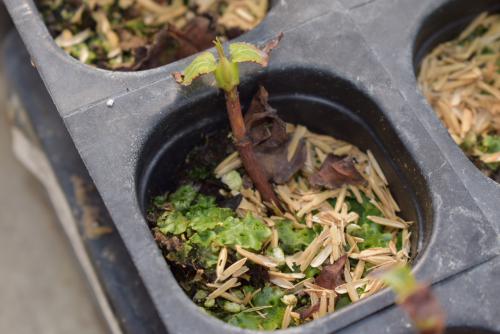
Another challenge that may arise with rice hulls as a growing medium is nutrient absorption. While rice hulls are relatively inert and do not provide significant nutrients to plants, they have the ability to absorb and retain dissolved nutrients in the hydroponic solution. This can result in nutrient deficiencies if not properly addressed.
To overcome this issue, it is crucial to regularly provide essential nutrients to plants in a hydroponic system that uses rice hulls as a growing medium. This can be achieved by adjusting the nutrient solution composition and concentrations, as well as implementing proper nutrient management practices. Regular monitoring of nutrient levels and conducting water quality tests can help ensure plants receive the necessary elements for healthy growth.
In conclusion, while rice hulls can serve as an effective and sustainable growing medium in hydroponics, it is important to be aware of the potential problems that may arise. By addressing issues such as waterlogging and nutrient absorption, gardeners can maximize the benefits of rice hulls and promote optimal plant growth in their hydroponic gardens.
• Proper drainage is essential to prevent waterlogging when using rice hulls as a growing medium in hydroponics.
• Incorporating drainage layers or additional growing media like perlite or vermiculite can improve water movement and aeration.
• Regular monitoring of moisture levels and adjusting irrigation practices can help prevent water buildup and root rot.
• Rice hulls have limited nutrient content, so it is important to regularly provide essential nutrients to plants in hydroponic systems that use rice hulls as a growing medium.
• Adjusting the nutrient solution composition and concentrations, as well as implementing proper nutrient management practices, can overcome nutrient absorption issues with rice hulls.
• Regular monitoring of nutrient levels and conducting water quality tests are crucial for ensuring plants receive necessary elements for healthy growth.
– Maximizing Plant Growth with Rice Hulls: Tips and Techniques
Rice hulls, when used as a growing medium in hydroponic systems, can significantly enhance plant growth and maximize yields. Here are some essential tips and techniques to ensure optimal plant growth with rice hulls.
1. Proper irrigation management: One of the key factors for maximizing plant growth with rice hulls is maintaining adequate moisture levels. Overwatering can lead to waterlogging and oxygen deprivation, while underwatering can cause nutrient deficiencies. Regularly monitor the moisture levels in your hydroponic system and adjust the irrigation accordingly to promote healthy root growth and nutrient absorption.
2. Nutrient supplementation: While rice hulls provide some essential nutrients to plants, it is crucial to supplement the hydroponic system with appropriate nutrient solutions. Conduct regular water testing to determine the nutrient levels and adjust the solutions accordingly. Rice hulls can act as a buffer, releasing nutrients slowly over time, but additional supplementation will ensure that plants receive all the necessary elements for robust growth.
Remember to regularly monitor the pH levels, as rice hulls tend to raise the pH of the hydroponic solution. Maintaining the proper pH range is vital to prevent nutrient lockout and ensure optimal nutrient absorption. Additionally, consider incorporating beneficial microbes and organic fertilizers into your hydroponic system to enhance nutrient uptake and overall plant health.
By following these tips and techniques, you can maximize plant growth and achieve excellent yields in your hydroponic garden using rice hulls as a growing medium. Experiment with different techniques, monitor plant progress, and make adjustments as needed to create an ideal environment for your plants to thrive.
• Proper irrigation management: Regularly monitor moisture levels and adjust irrigation to promote healthy root growth and nutrient absorption.
• Nutrient supplementation: Conduct regular water testing, supplement with appropriate nutrient solutions to ensure plants receive necessary elements for robust growth.
• Monitor pH levels: Rice hulls tend to raise pH, so regularly monitor and maintain proper pH range to prevent nutrient lockout.
• Incorporate beneficial microbes and organic fertilizers: Enhance nutrient uptake and overall plant health by adding these components to the hydroponic system.
• Experimentation and adjustments: Try different techniques, monitor plant progress, and make adjustments as needed to create an ideal environment for maximum plant growth.
Harvesting and Reusing Rice Hulls: Sustainable Practices for your Hydroponic garden
Harvesting and reusing rice hulls not only offers an environmentally friendly option but also contributes to the sustainability of your hydroponic garden. As you reach the harvest stage of your plants, the rice hulls can be easily collected by carefully removing the top layer of your growing medium. Gently scoop out the rice hulls, taking care not to disturb the root system or the plants themselves. By reusing these hulls, you reduce waste and can enjoy the benefits they provide in subsequent plant cycles.
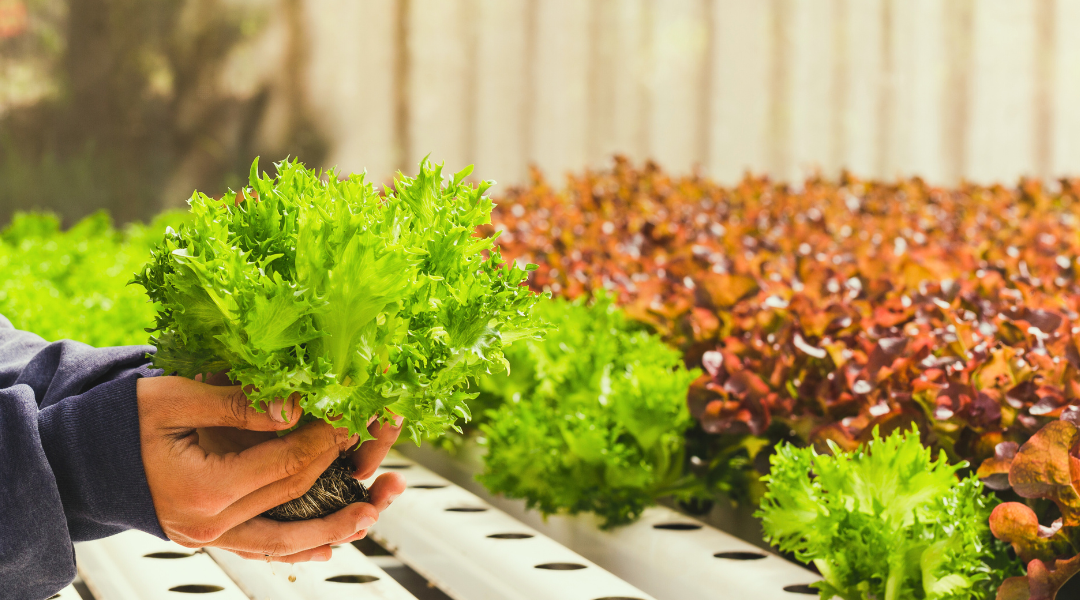
To ensure the rice hulls are ready for reuse, it is important to take appropriate measures to maintain their cleanliness and prevent potential contamination. Thoroughly rinse the harvested hulls with water to remove any debris or residual plant material. Once cleaned, the hulls can be sterilized by using various methods such as baking, steaming, or treating with hydrogen peroxide.
This sterilization process minimizes the risk of pathogens, pests, or diseases that may have accumulated during the previous cycle. With cleaned and sterilized rice hulls in hand, you can confidently reintroduce them into your hydroponic system, promoting a sustainable and efficient gardening practice.
• Harvesting and reusing rice hulls is an environmentally friendly option for hydroponic gardening.
• Carefully remove the top layer of your growing medium to collect the rice hulls without disturbing the root system or plants.
• Reusing rice hulls reduces waste and provides benefits in subsequent plant cycles.
• To ensure cleanliness, rinse harvested hulls with water to remove debris and residual plant material.
• Sterilize the cleaned hulls through methods like baking, steaming, or treating with hydrogen peroxide.
• This sterilization process minimizes the risk of pathogens, pests, or diseases from previous cycles.
• Reintroduce cleaned and sterilized rice hulls into your hydroponic system for sustainable and efficient gardening.
For more information watch video:
Can rice hulls be used as a growing medium in a hydroponic garden?
Yes, rice hulls can be used as a growing medium in a hydroponic garden.
What are the advantages of using rice hulls as a growing medium?
Rice hulls have several advantages as a growing medium. They are lightweight, provide good aeration and drainage, and are readily available and inexpensive.
How can I prepare rice hulls for hydroponic use?
To prepare rice hulls for hydroponic use, they should be cleaned and sterilized. This can be done by washing them thoroughly and then sterilizing them using heat or a sterilizing solution.
Can rice hulls be mixed with other growing media?
Yes, rice hulls can be mixed with other growing media to create the perfect blend for your hydroponic garden.
How can I ensure proper drainage with rice hulls?
To ensure proper drainage with rice hulls, it is important to avoid waterlogging issues. This can be done by providing adequate drainage holes in the growing containers and monitoring the moisture levels in the garden.
How do rice hulls absorb nutrients?
Rice hulls can absorb nutrients through their porous structure. They can retain and release nutrients as needed by the plants.
How can I maintain pH balance in my hydroponic garden with rice hulls?
pH balance in a hydroponic garden can be maintained by monitoring the pH levels of the water and adjusting it as necessary. Rice hulls have a neutral pH, which can help in maintaining the desired pH level in the garden.
What are some common problems that can occur when using rice hulls as a growing medium?
Some common problems that can occur when using rice hulls as a growing medium include fungal growth, nutrient deficiencies, and pH imbalances.
How can I maximize plant growth with rice hulls?
To maximize plant growth with rice hulls, it is important to provide the necessary nutrients, monitor pH levels, and ensure proper watering and drainage. Additionally, regular monitoring and maintenance of the hydroponic system is crucial.
How can rice hulls be harvested and reused in a sustainable way?
Rice hulls can be harvested and reused in a sustainable way by composting them after use. This helps in reducing waste and promoting a circular system in hydroponic gardening.

Studied Agricultural Engineering-Plant Protection at University of California, Davis.
Head of Content writing team at Southelmontehydroponics.com



